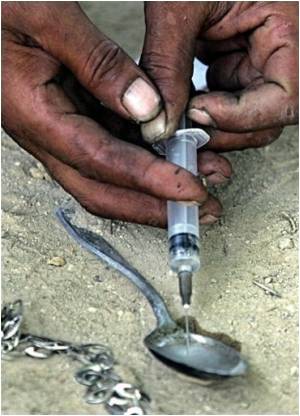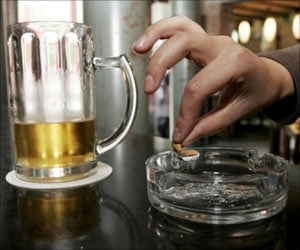The first time Wan Yannan took drugs eight years ago, she was a recent nursing graduate with a coveted job at a hospital -- a life that went up in a puff of heroin smoke.

"All I wanted was drugs. The first thing I thought when I woke up each day was getting money for drugs. My life was pitch-dark," said Wan.
Now in her fifth stint in rehab in the southwestern city of Kunming, Wan is one of many Chinese struggling to kick the habit as drug use rises amid allegations of sub-par and even abusive treatment at state facilities.
Wan's current home is the Kunming Municipal Compulsory Rehabilitation Centre in Yunnan province -- on the front lines of China's drug scourge as it borders the heroin-producing "Golden Triangle," where Burma, Laos and Thailand meet.
The 21-year-old centre, which claims to be China's oldest, largest and most modern facility, provided AFP a rare glimpse inside.
Treatment consists of a mixture of Chinese herbal medicines to help addicts detoxify, followed by "purifying" martial arts exercises, and "skills training" for future jobs.
Advertisement
Areas where most addicts appeared to be, however, were off-limits, with little explanation. AFP reporters were unable to witness treatment in action at the police-run centre.
Advertisement
Xia Jianxun, a police official who serves as the centre's spokesman, said the relapse rate of its addicts -- known as "trainees" -- was 75 percent. It took two decades for the centre to bring that down from 86 percent.
"That was a huge effort," admits Xia, while noting that relapse rates are high worldwide.
Drug use was virtually eliminated after the Communist rise to power in 1949, but the scourge has returned since the country began opening up to the world again three decades ago.
The number of criminal drug cases rose to 77,000 last year, up 26 percent from 2008, according to official figures.
China has 1.3 million registered drug addicts -- independent estimates say the actual number is far higher -- with more than 170,000 people in rehab centres.
But state media reports have said relapse rates are as high as 90 percent.
In a January report, Human Rights Watch blamed a rehabilitation system it says is marked by sub-standard and even punitive treatment.
Many former addicts interviewed by the New York-based watchdog group said they suffered human rights violations such as forced labour, confinement, and other abuses.
"I think the key structural problem is this is a medical issue, a medical problem which has been turned over to the police. They are the institution being asked to make medical decisions," Phelim Kine, Asia researcher for Human Rights Watch, told AFP.
The result is "a spiral in which you can repeat the whole situation again."
Xia said he knew nothing of those charges, and none of the "trainees" put forward by the Kunming centre -- all of whom were there "voluntarily" -- claimed any such abuses. Centre officials monitored every interview.
But the pain of relapse is evident and common.
Yang Likun came back to the centre on her own two years after her fourth relapse. Now 34, she looks a decade older after 12 years of heroin abuse.
Trained as a dancer, she hopes to teach dance to children someday, and even marry, but fears leaving the centre's cocoon and risking another backslide.
She said many young Chinese first try drugs out of a fascination with a habit they see as a sign of modern prosperity and decadence, and that not enough is done in China to warn them about the dangers.
"I didn't know it was addictive and by the time I found that out, it was too late," she said.
Source-AFP
SRM










